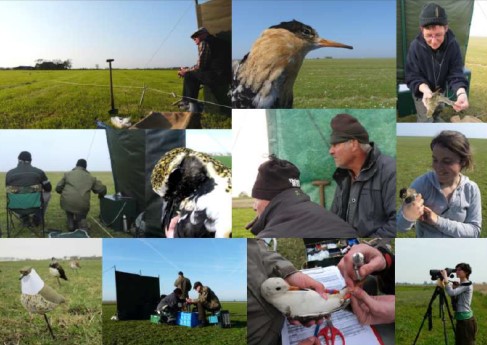The Black-tailed Godwit Landscape Project
Agriculture in the Netherlands faces major challenges: producing enough food without further damage to biodiversity, landscapes, and climate. The Black-tailed Godwit Landscape Project, led by the University of Groningen (RuG), plays a pivotal role in this discussion by using the Black-tailed Godwit – our National Bird – as an indicator species. The Black-tailed Godwit symbolizes a rich agricultural landscape with high biodiversity. A stable or growing population of godwits indicates a healthy ecosystem where natural processes in soil, water, and air function effectively.
The Black-tailed Godwit as a mirror of the landscape
Since the 1970s, the Dutch landscape has changed significantly due to intensive farming, mechanization, and the use of fertilizers and pesticides. This has led to a decline in biodiversity and a deterioration of ecosystems. At the same time, societal pressure to address the biodiversity crisis is increasing. Innovative farmers demonstrate that sustainable agriculture is possible, but scaling up remains a challenge.
Project objectives
The Black-tailed Godwit Landscape Project has three main objectives: monitoring biodiversity, understanding ecological processes, and informing policymakers and citizens. The project positions the Black-tailed Godwit as a “sentinel bird” for the transition to sustainable agriculture. The presence of godwits and elements of their food web, such as predators, insects, and soil macrofauna (like earthworms), serve as indicators of biodiversity restoration. The godwit symbolizes a future where biodiversity, landscape, and agriculture are in balance.
Publications and collaboration
This research is an interdisciplinary project involving BirdEyes / Global Flyway Network and participates in Waakvogels, Veenvitaal, Syberac, EU LIFE IP GrassBirdHabitats, and EU LIFE Godwit Flyway.
Annual reports, publications, and expedition logs can be found on the personal pages of the contact persons and the Global Flyway Network website.
The Black-tailed Godwit Landscape Project is co-funded by the Ministry of Agriculture, Nature and Food Quality (LVVN), the Provinces of Friesland, Groningen, Overijssel, Gelderland, Utrecht, South Holland, North Holland, and BirdLife Netherlands.
General information contacts
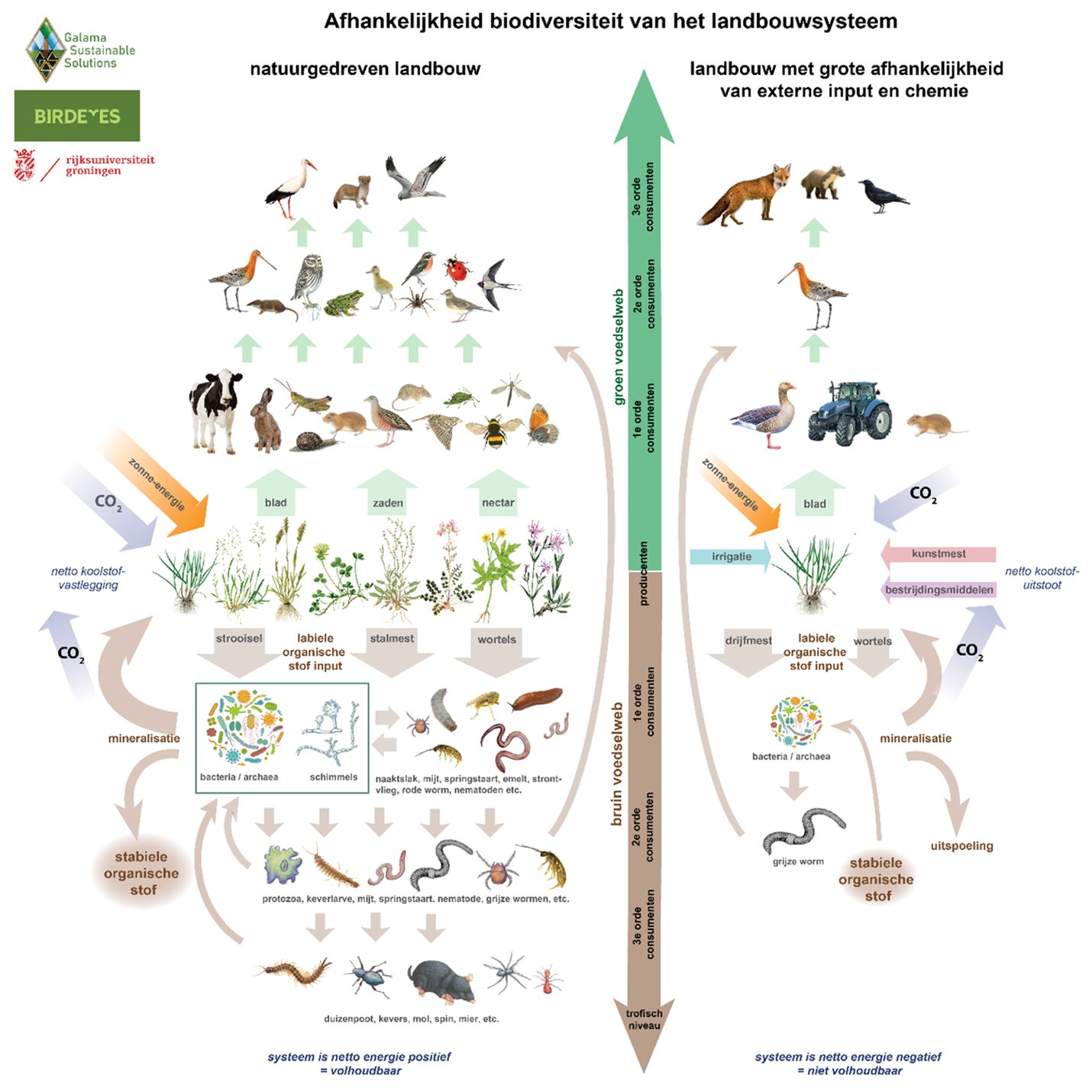
Black-tailed Godwit
The Black-tailed Godwit is an icon of rural biodiversity and represents one of the key elements of this: farmland birds. Every year, the Black-tailed Godwit population is extensively studied, with a focus on Southwest Friesland, where 11,500 hectares of farmland and nature reserves are monitored. This research not only tracks population trends but also examines nest and chick survival, migration patterns, and habitat use.
Thanks to color rings and satellite transmitters, individual birds are tracked, providing crucial insights into survival and reproduction. Even when the eggs hatch, more than 90% of the chicks die prematurely due to food shortages and predation in the current landscape. This underscores the need for adjusted agricultural management.
Nationally, the University of Groningen coordinates the color-ringing research and analyzes data for the entire Dutch population. Internationally, researchers collaborate with partners in Germany, Spain, Portugal, and West Africa. Satellite transmitters reveal key wintering areas and migration routes, while field expeditions to remote locations provide more knowledge about habitat conditions outside the Netherlands.
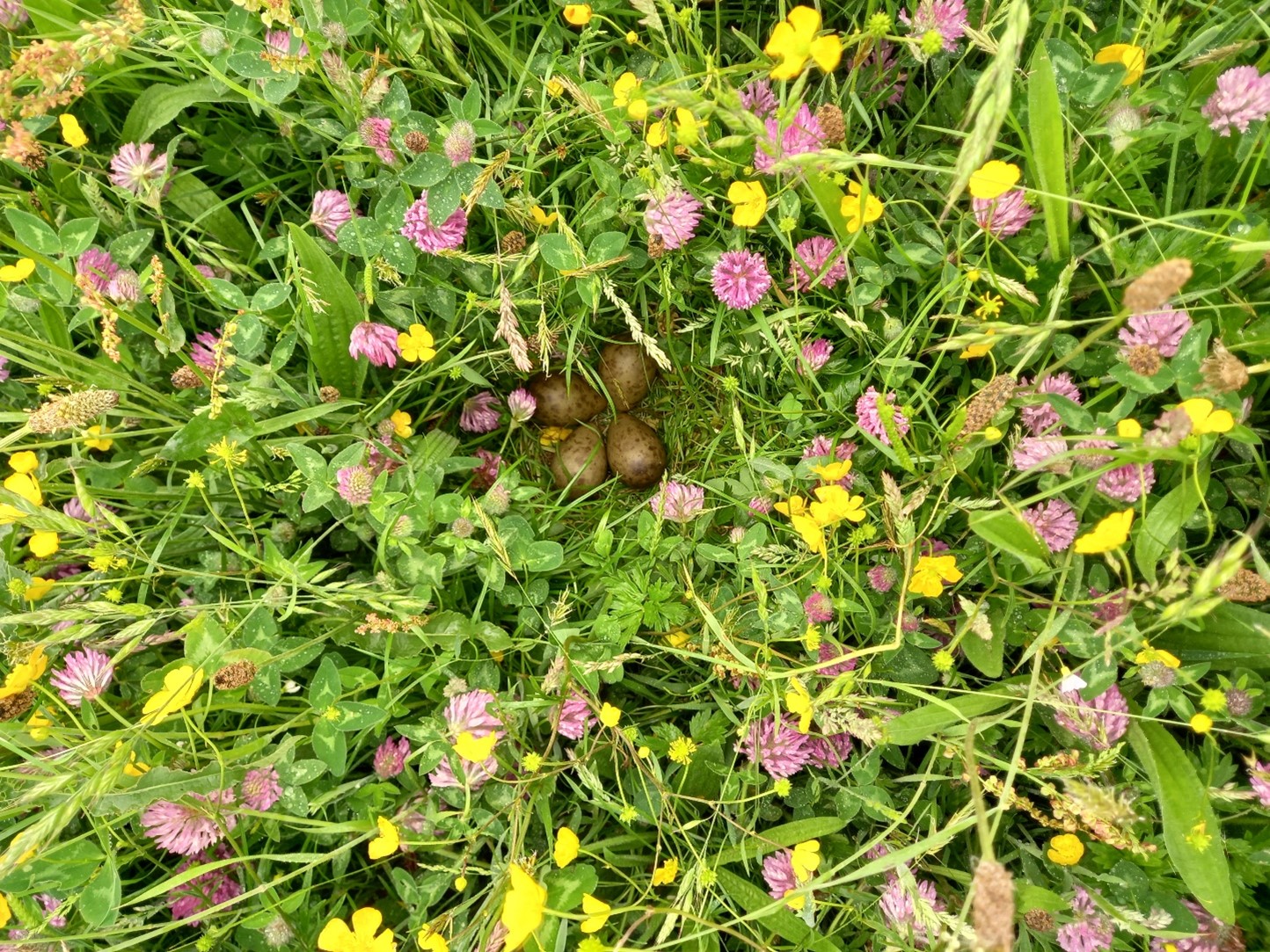
Predation
Predation plays a natural role in ecosystems, but due to changing agricultural practices and urbanization, it now poses a greater threat to meadow birds. Intensive mowing reduces cover and causes disturbances, leaving nests and chicks vulnerable to predators. Additionally, chicks grow more slowly due to food shortages, potentially making them susceptible to predation for longer. Meadow birds are increasingly concentrated in areas with adjusted management, but the small scale of these areas often makes them more easily found and thus more vulnerable to predators such as foxes, mustelids, and birds of prey.
To gain more insights, predator presence and predation of meadow bird nests are monitored using camera traps. Artificial intelligence (via the Agouti program) plays an important role in analyzing the millions of photos through image recognition. Flying predators, such as crows and birds of prey, are systematically counted in April during the Black-tailed Godwit nesting season. These photos and counts clarify which predator species are present and to what extent they are responsible for nest predation. This is analyzed in the context of variations in land use and management.
The availability of alternative prey, such as voles, also plays a crucial role. In years with abundant voles, meadow bird chicks are less targeted, but once the vole population peak has passed, predation risks increase sharply. Standardized long-term monitoring of vole populations and land use helps better understand this relationship.
Contacts
Rienk Fokkema
Egbert van der Velde
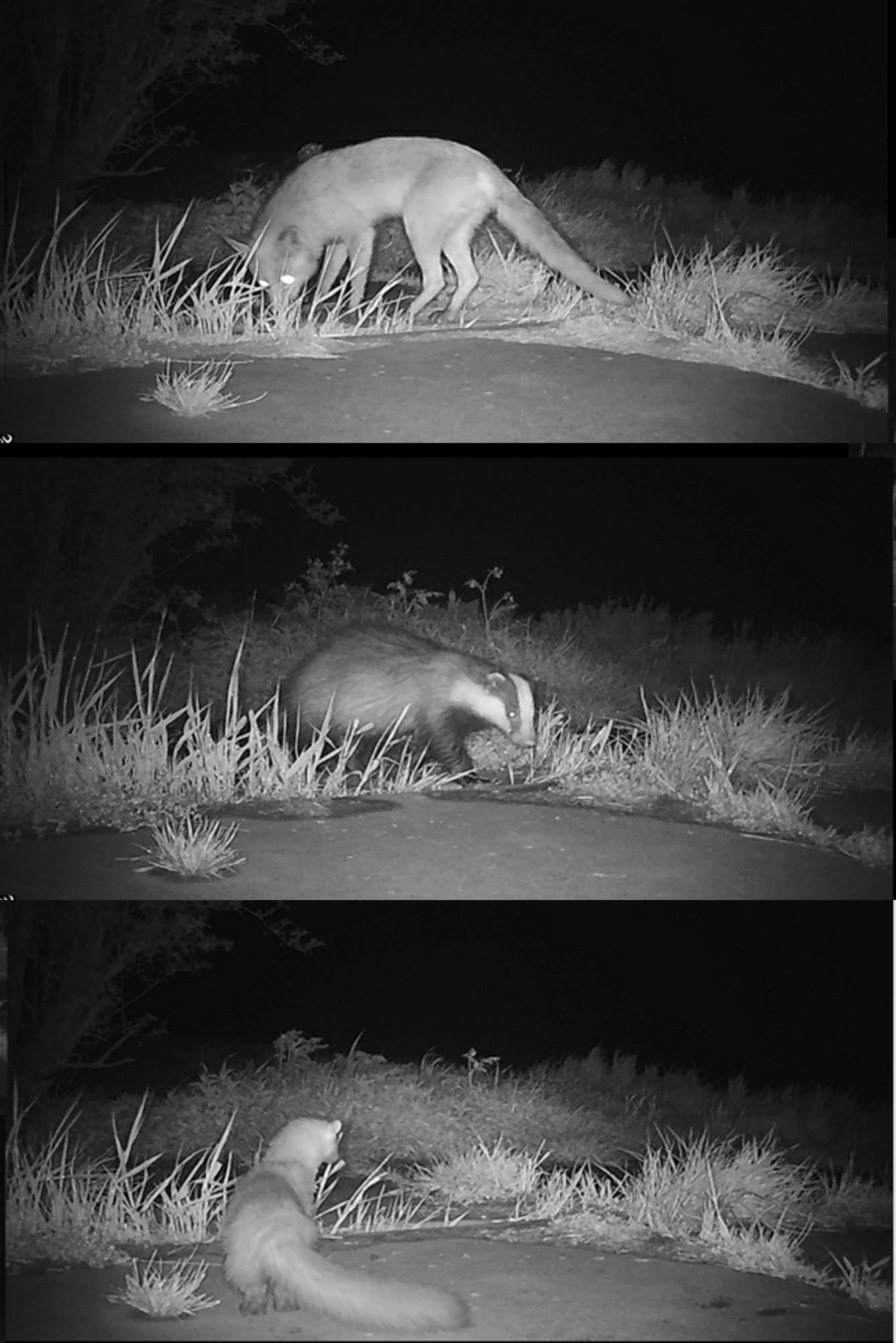
Insects
Insects contribute significantly to landscape biodiversity and are crucial during the early life stages of meadow bird chicks. After hatching, chicks must forage themselves for their food. Since their beaks are not yet strong and long enough to catch (enough) earthworms, they rely on accessible insects.
Insect monitoring is currently conducted using various types of traps, such as sticky traps, pitfall traps, malaise traps, and emergence traps, placed at representative locations within the study area. These locations range from extensive grasslands and agricultural nature management sites to intensive grasslands and maize fields, providing an objective measure of insect abundance in spring. The use of multiple trap types is necessary to effectively sample different insect species and map biodiversity.
New technologies, such as automatic image recognition developed by Van Hall Larenstein University of Applied Sciences, offer opportunities to count, identify, and estimate insect sizes automatically. These methods are calibrated with traditional sampling techniques to enhance reliability. Additionally, eDNA analysis of Black-tailed Godwit chick droppings is conducted to understand their dietary choices in relation to age and the timing within the spring season, providing more information about food sources in the area.
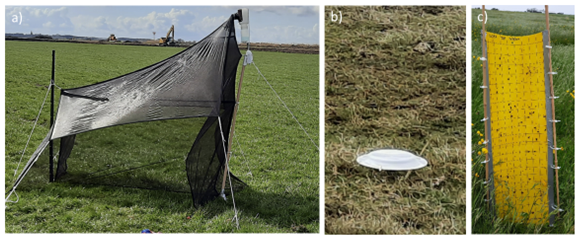
Soil macrofauna
In the Netherlands, earthworms occur in high densities, particularly in agricultural grasslands, where they play a key role in soil ecosystems and are considered “ecosystem engineers.” There are two main types of earthworms: red worms, which feed on coarse organic material, and gray worms, which consume soil particles and organic matter. Red worms are especially important for meadow birds like the Black-tailed Godwit, as they are often found at the soil surface and are thus accessible as food.
Research on soil life focuses on the availability of earthworms to Black-tailed Godwits under different management and land-use regimes, by measuring their densities, biomass, and the types of worms present. This is done by collecting soil samples and identifying the worms down to the species level. Monitoring occurs on various soil types (sand, clay, peat) and is repeated multiple times in spring and summer, when earthworms are critical in the diet of godwits.
Through intensive observations of foraging godwits and tracking tagged individuals, we gain insights into foraging efficiency and prey selection and how these relate to land-use intensity. Prey preferences are determined not only through observations but also using eDNA from collected godwit droppings.
Contacts
Jeroen Onrust
Renée Veenstra
Matty Berg
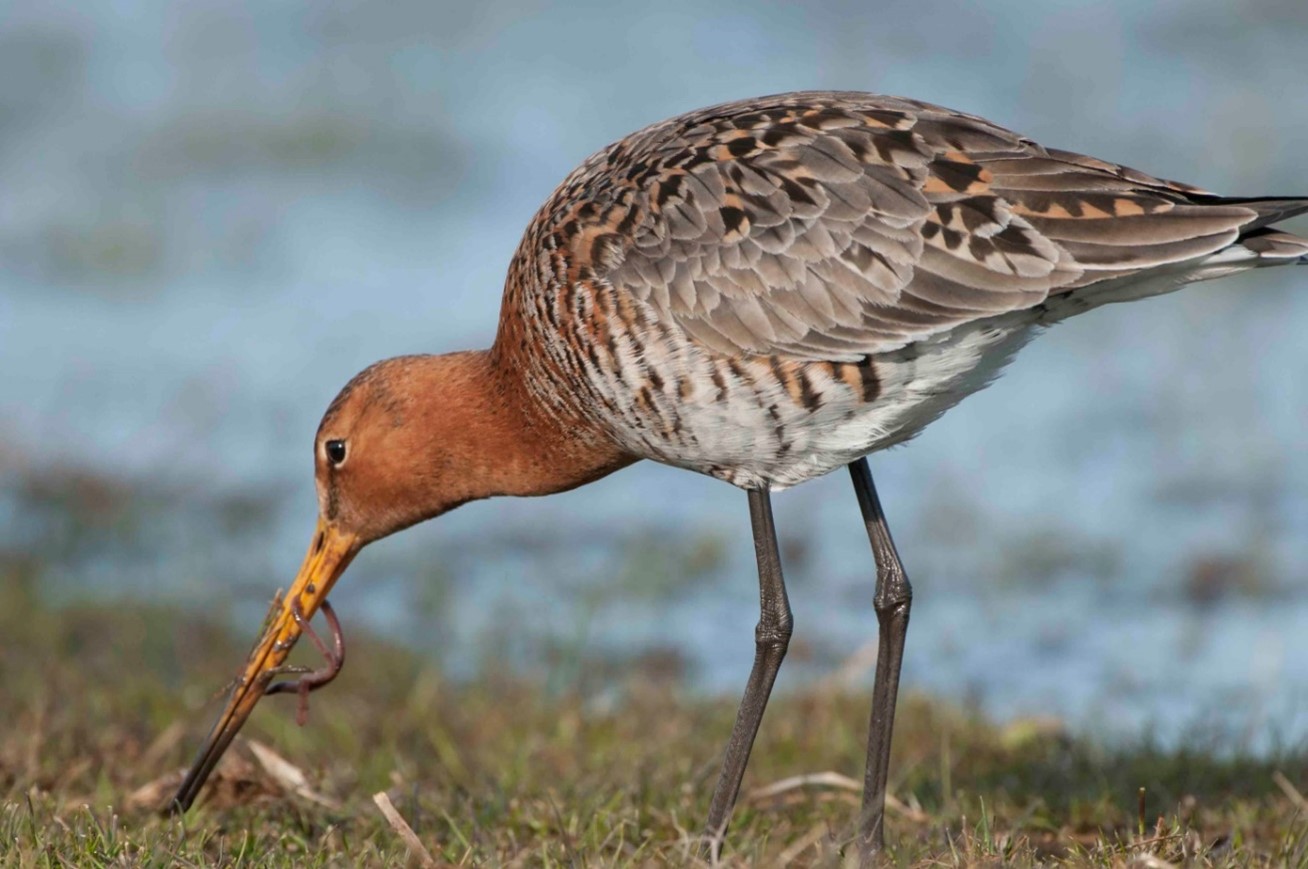
Landscape and land use
The use of advanced remote sensing techniques via satellites, such as radar and other methods, enables continuous landscape-scale data collection on land-use intensity, productivity, moisture balance, soil temperature, and crop choice for any location on Earth.
This data is linked to field measurements and observations of soil, vegetation, predators, insects, soil fauna, and Black-tailed Godwits, connecting habitat choice, nest survival, and chick survival to land use. This provides insight into how changes in the landscape affect food availability for meadow birds and their chances of survival. Information from godwits equipped with small satellite transmitters reveals this not only for breeding areas in the Netherlands but along the entire migration route.
The project aims to relate godwit habitat use to agricultural land use as a multivariate measure of ecological integrity, with the presence of godwits serving as an indicator of the ecological value of parcels. There is increasing theoretical and empirical evidence that innovative integration of ecological processes is economically viable in agriculture. When implemented on a landscape scale, these approaches can contribute to biodiversity restoration.
Contacts
Ruth Howison
Mohamed Henriques
Wouter Vansteelant
Luis Barba Escoto
Taylor Craft
Clarisse Kraamwinkel
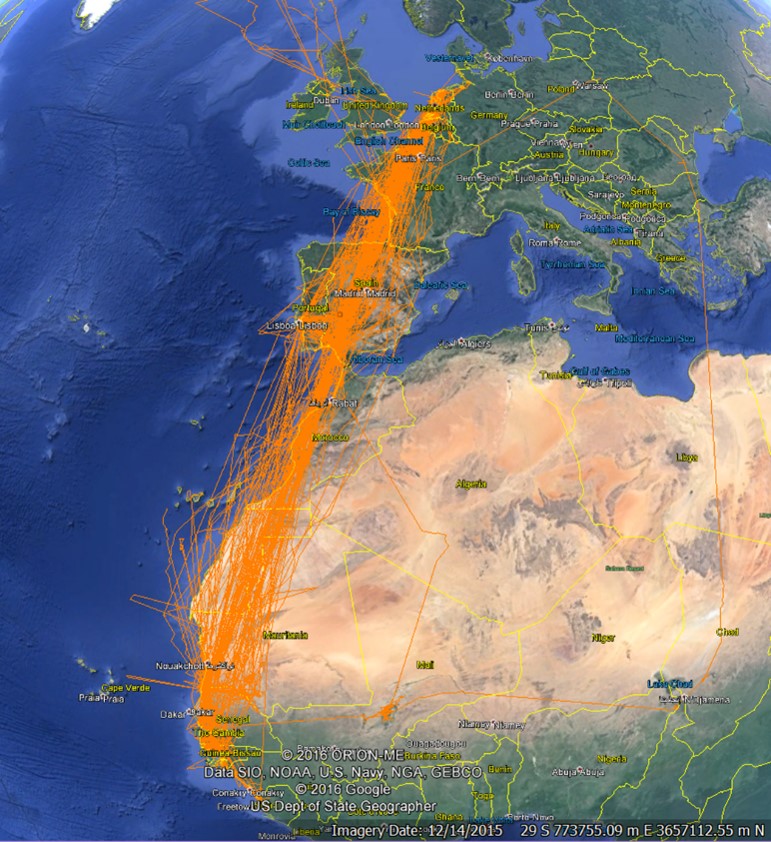
Ruffs
The Dutch agricultural landscape plays a critical role for waders such as Lapwings, Golden Plovers, Bar-tailed Godwits and Ruffs as wintering areas or during migration. However, many of these species are under pressure due to changes in the landscape and intensive farming. Long-term research is essential to understand the causes and ecological factors behind this decline.
Since 2004, the University of Groningen has been studying the habitat selection, duration of stay, survival, and genetic diversity of Ruffs in Southwest Friesland. Although the Ruff has almost disappeared as a breeding bird in the Netherlands, this area remains an important stopover site for thousands of Ruffs on their way to northern breeding grounds. By collaborating with the Fryske wilsternetters, who use traditional techniques to catch birds, Ruffs are ringed and monitored.
During research, birds are weighed, measured, and fitted with color rings, allowing identification without recapture. This data helps establish survival, migration patterns, and population trends. This unique long-term project provides valuable knowledge for species and habitat conservation and highlights the international importance of the Netherlands for migratory birds such as the Ruff and Golden Plover.
Contacts
Jos Hooijmeijer
Theunis Piersma
